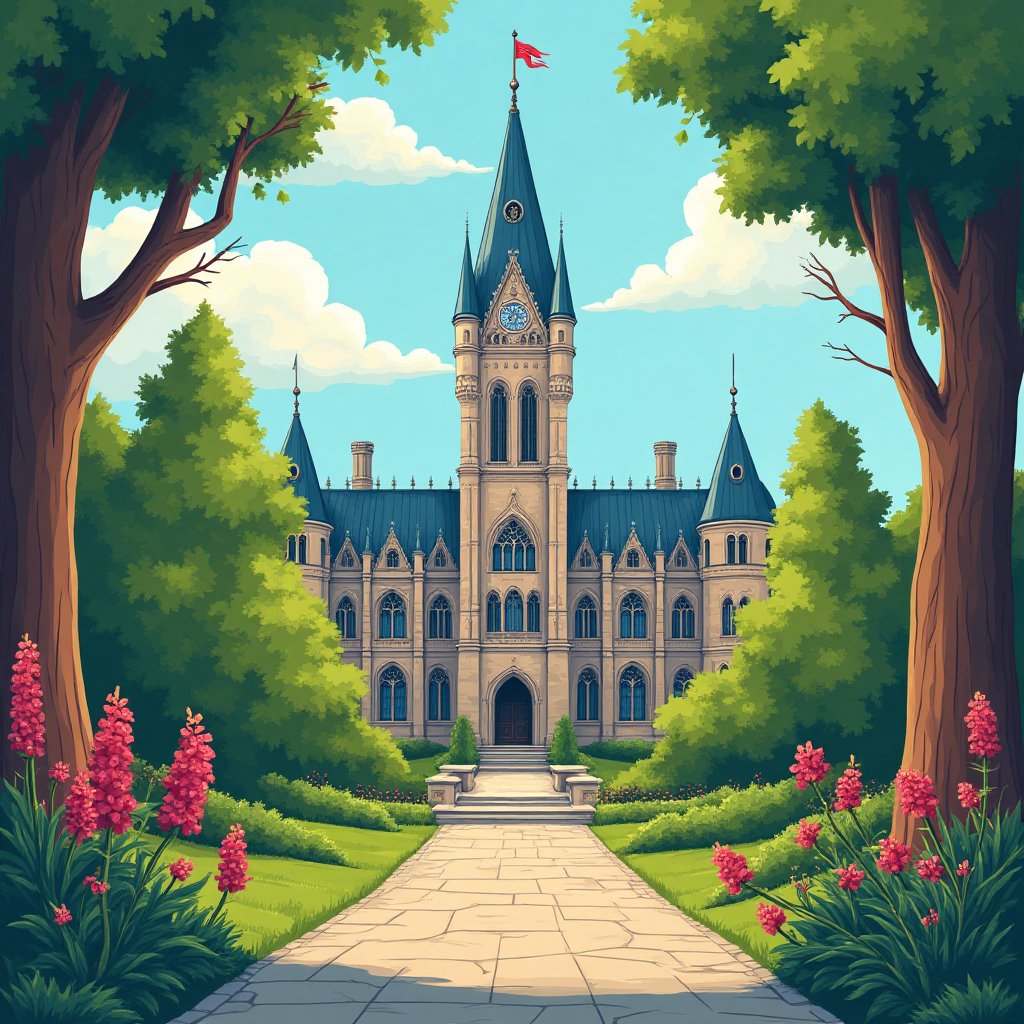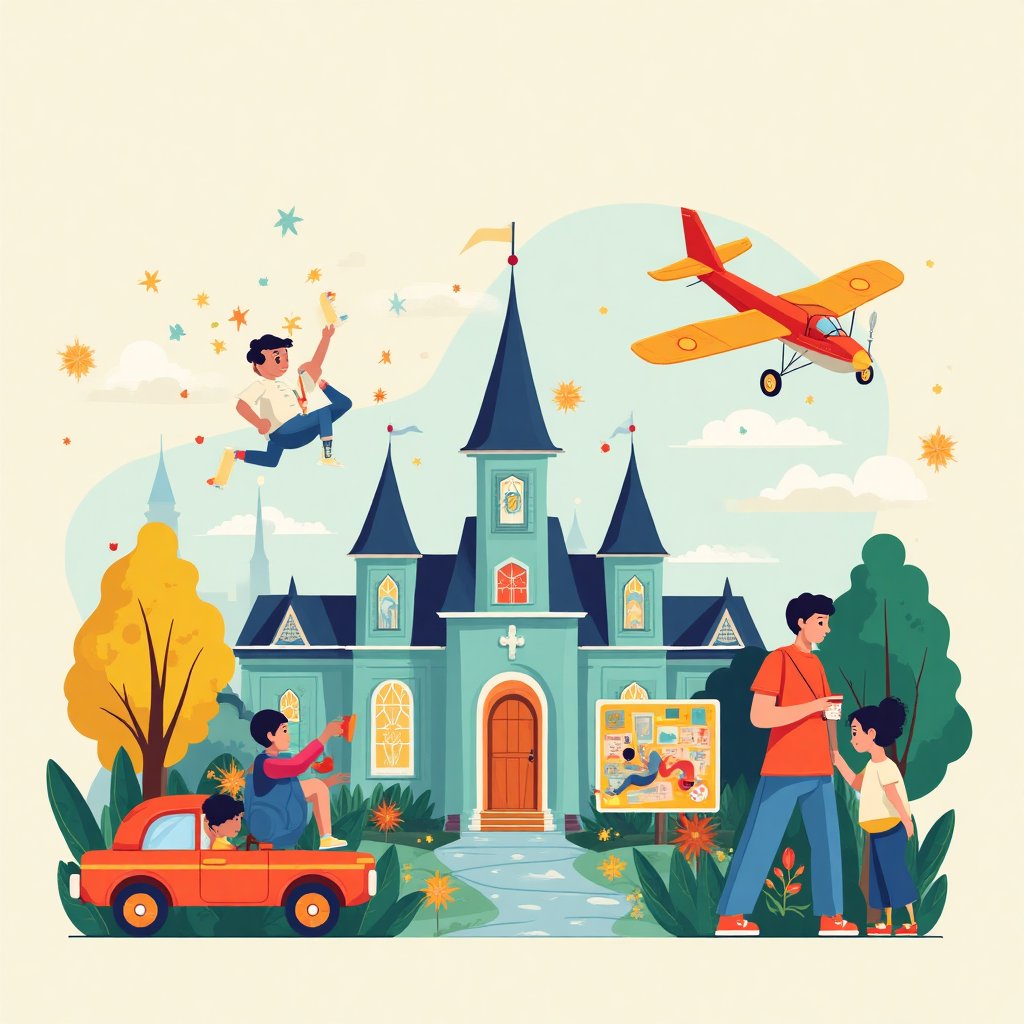Every year, thousands of students across Canada dream of getting into the country’s most prestigious universities. But what does it really take to crack the code of admission into these elite institutions? According to Malcolm Gladwell, author of Outliers, success is often a mix of opportunity, timing, and relentless effort. Similarly, Angela Duckworth, the psychologist behind the concept of "grit," argues that perseverance is key to overcoming challenges—like the grueling university admissions process. Even Jordan Peterson, a professor at the University of Toronto, emphasizes the importance of setting ambitious goals and working tirelessly to achieve them. So, what makes some Canadian universities so hard to get into, and how can aspiring students navigate this competitive landscape? Let’s explore.
For those in Toronto, stay updated with the latest local news and resources at Toronto News.
Understanding University Admissions in Canada
Canada’s higher education system is renowned for its quality and diversity. With over 100 universities spread across the country, students have a wide range of options. But not all universities are created equal. Some, like the University of Toronto and McGill University, are globally recognized for their academic rigor and research excellence. These institutions attract top talent from around the world, making their admissions process highly competitive.
Overview of the Canadian Higher Education System
Canada’s universities are primarily funded by provincial governments, which means each province has its own set of rules and standards. For example, Ontario’s universities, like the University of Toronto, operate under different guidelines than those in Quebec, such as McGill. This decentralized system allows for flexibility but also creates variations in admission criteria and processes.
Key Factors in University Admissions
When it comes to getting into a top Canadian university, grades are just the beginning. Admissions committees look at a variety of factors, including standardized test scores, extracurricular activities, and personal statements. For instance, the University of British Columbia (UBC) places a strong emphasis on a student’s ability to contribute to campus life, not just their academic achievements.
The Role of International Students
International students play a significant role in shaping the competitive landscape of Canadian universities. With over 600,000 international students enrolled in Canadian institutions, the competition for spots has never been fiercer. Universities often require international applicants to meet additional criteria, such as language proficiency tests like the IELTS or TOEFL, and proof of financial stability.
The Hardest Universities to Get Into in Canada
When it comes to Canadian universities, some names stand out not just for their academic excellence but also for their notoriously low acceptance rates. These institutions are the Ivy League of the North, and getting in is no walk in the park. Let’s dive into the crème de la crème of Canadian higher education and what makes them so exclusive.
University of Toronto
The University of Toronto (U of T) is often dubbed the Harvard of Canada, and for good reason. With an acceptance rate hovering around 43%, it’s one of the most competitive universities in the country. Programs like Engineering, Medicine, and Computer Science are particularly cutthroat, with thousands of applicants vying for a handful of spots. U of T’s global reputation, bolstered by its impressive rankings, makes it a magnet for both domestic and international students. If you’re dreaming of walking through its iconic St. George campus, you’ll need more than just good grades—you’ll need a standout application.
McGill University
Next up is McGill University, located in the heart of Montreal. Known for its rigorous academic standards and vibrant student life, McGill has an acceptance rate of about 46%. Its global reputation attracts students from over 150 countries, making it one of the most diverse universities in Canada. Programs like Medicine, Law, and Business are particularly competitive, with applicants needing to showcase not just academic prowess but also leadership and extracurricular achievements. Fun fact: McGill is the alma mater of Leonard Cohen, so if you’re into poetry and music, this might just be your dream school.
University of British Columbia (UBC)
Over on the West Coast, the University of British Columbia (UBC) is another heavyweight in the Canadian university scene. With an acceptance rate of around 52%, UBC’s Vancouver campus is particularly competitive, especially for programs like Engineering, Computer Science, and Forestry. The university’s stunning location, nestled between the mountains and the Pacific Ocean, adds to its allure. But don’t let the scenic views fool you—getting in requires a combination of top-notch grades, a compelling personal statement, and a dash of luck.
Other Notable Institutions
While U of T, McGill, and UBC often steal the spotlight, other Canadian universities are no less competitive. McMaster University’s Health Sciences program is notoriously difficult to get into, with an acceptance rate of just 4.5%. Similarly, the University of Waterloo is a top choice for aspiring engineers and computer scientists, with its co-op programs offering unparalleled industry experience. These institutions may not have the same global name recognition as U of T or McGill, but they’re just as challenging to get into.
Factors That Make These Universities So Competitive
So, what exactly makes these universities so hard to get into? It’s not just about the number of applicants—it’s a combination of factors that create the perfect storm of competitiveness.
Global Rankings and Reputation
Let’s face it: everyone wants to go to a top-ranked university. Institutions like U of T, McGill, and UBC consistently rank among the best in the world, and that reputation attracts a flood of applications. High rankings are often a reflection of academic excellence, research output, and alumni success, making these universities highly desirable. But with great reputation comes great competition—so if you’re aiming for the top, be prepared to bring your A-game.
Limited Spots and High Demand
It’s simple math: more applicants + limited spots = higher competition. Programs like Medicine, Engineering, and Computer Science are particularly oversubscribed, with thousands of applicants competing for a few hundred spots. This high demand means that even students with stellar grades and impressive extracurriculars can find themselves on the waitlist. It’s like trying to get tickets to a Taylor Swift concert—everyone wants in, but only a lucky few make the cut.
Rigorous Admission Criteria
Gone are the days when good grades were enough to get you into a top university. Today, admissions committees look at the whole package: academic performance, extracurricular activities, personal statements, and even interviews. This holistic approach means that students need to excel in multiple areas to stand out. It’s not just about being smart—it’s about being well-rounded, driven, and passionate. Think of it as a talent show where you’re judged on everything from your GPA to your ability to play the ukulele.
Challenges Faced by Applicants
Getting into a top Canadian university is no walk in the park. The process is filled with hurdles that test not just your academic abilities but also your resilience, time management, and even your financial planning. Let’s break down the biggest challenges applicants face and how to tackle them.
Academic Pressure
One of the most significant challenges is the sheer academic pressure. Universities like the University of Toronto and McGill University demand near-perfect grades. For many students, this means years of late-night study sessions, sacrificing social life, and constantly worrying about maintaining a high GPA. The pressure is even more intense for specialized programs like Medicine or Engineering, where the competition is cutthroat.
But it’s not just about grades. Universities also look for well-rounded individuals. This means balancing academics with extracurricular activities, leadership roles, and community service. It’s a lot to juggle, and many students struggle to find the right balance.
Financial Barriers
Another major hurdle is the cost. Tuition fees at top Canadian universities can be steep, especially for international students. For example, the annual tuition for international students at UBC can exceed $40,000. Add in the cost of living, textbooks, and other expenses, and the financial burden becomes overwhelming.
While scholarships and financial aid are available, they’re highly competitive. Many students find themselves taking on part-time jobs or student loans to make ends meet. This financial stress can take a toll on both academic performance and mental health.
Navigating the Application Process
The application process itself is a maze. From writing a compelling personal statement to gathering letters of recommendation, every step requires careful attention. Many applicants make common mistakes, such as:
- Submitting incomplete applications.
- Writing generic personal statements that don’t stand out.
- Missing deadlines.
To avoid these pitfalls, it’s crucial to start early, seek guidance from mentors, and double-check every detail. A well-crafted application can make all the difference.
The Future of University Admissions in Canada
As the world evolves, so does the landscape of higher education. The way universities admit students is changing, and these changes could make the process more accessible, efficient, and fair. Let’s explore the trends shaping the future of university admissions in Canada.
Trends in Higher Education
One of the most significant trends is the rise of online learning. Platforms like Coursera and edX are making education more accessible, and universities are starting to recognize online courses as part of the admission criteria. This shift could level the playing field for students who don’t have access to traditional educational resources.
Another trend is the increasing diversity in student populations. Canadian universities are actively working to create more inclusive environments, which means more opportunities for underrepresented groups. This is a positive step, but it also means that the admissions process needs to adapt to evaluate a broader range of experiences and backgrounds.
The Role of Technology
Technology, especially AI, is poised to revolutionize university admissions. Here’s how:
- AI Algorithms: These can analyze application data to predict student success rates, making the process more efficient.
- Natural Language Processing (NLP): NLP can evaluate personal statements and essays, ensuring a fairer assessment.
- AI Chatbots: These can assist applicants with queries, reducing the stress of navigating the process.
However, there are ethical considerations. AI systems must be designed to avoid biases and ensure fairness. Universities will need to work closely with tech experts to create systems that are both effective and equitable.
Policy Changes and Their Impact
Government policies also play a crucial role. Initiatives to increase accessibility, such as funding for scholarships and grants, can make higher education more attainable. Immigration policies, too, affect international students. For example, changes in visa regulations can either encourage or deter students from applying to Canadian universities.
As these trends and technologies continue to evolve, the future of university admissions in Canada looks promising. But it’s up to universities, policymakers, and tech innovators to ensure that the process remains fair, transparent, and accessible to all.
AI Solutions: How Could AI Tackle This Issue?
Artificial Intelligence (AI) has the potential to revolutionize the university admissions process in Canada, making it more efficient, fair, and accessible. Here’s how AI could be implemented to address the challenges faced by both applicants and institutions:
Step 1: Develop AI Algorithms to Analyze Application Data
AI can be used to analyze vast amounts of application data, including grades, test scores, and extracurricular activities. By leveraging machine learning algorithms, universities can predict the likelihood of a student’s success in their chosen program. For example, University of Toronto could use AI to identify patterns in successful applicants, helping to streamline the selection process.
Step 2: Use Natural Language Processing (NLP) to Evaluate Personal Statements
NLP can be employed to assess the quality of personal statements and essays. This technology can evaluate the coherence, creativity, and relevance of the content, providing a more objective assessment. Institutions like McGill University could use NLP to ensure that all applicants are evaluated fairly, regardless of the reviewer’s subjective biases.
Step 3: Implement AI-Driven Chatbots to Assist Applicants
AI-driven chatbots can provide real-time assistance to applicants, answering questions about the application process, deadlines, and requirements. For instance, UBC could deploy chatbots to help international students navigate the complexities of applying from abroad, ensuring they have all the information they need to succeed.
Step 4: Create Predictive Models to Identify and Address Biases
AI can help identify and mitigate biases in the admissions process. By analyzing historical data, AI can detect patterns of bias and suggest corrective measures. This would be particularly beneficial for institutions like McMaster University, which prides itself on diversity and inclusion.
Step 5: Partner with Universities to Pilot AI-Based Admission Systems
Collaborating with universities to pilot AI-based admission systems can provide valuable insights and feedback. This partnership can help refine the algorithms and ensure they meet the needs of both institutions and applicants. For example, University of Waterloo could lead the way in testing these systems, given its strong focus on innovation and technology.
Action Schedule/Roadmap (Day 1 to Year 2)
- Day 1: Assemble a team of AI experts, data scientists, and education specialists. Key personnel could include leaders from Elements of AI and DeepLearning.AI.
- Week 1: Conduct a comprehensive review of existing admission processes at top Canadian universities, including University of Toronto and McGill University.
- Month 1: Develop a prototype AI algorithm for application analysis, leveraging open-source tools like TensorFlow and PyTorch.
- Month 3: Pilot the AI system with a small group of universities, starting with UBC and McMaster University.
- Year 1: Gather data, refine the algorithm, and address ethical concerns, consulting with organizations like ACM and IEEE.
- Year 1.5: Expand the pilot program to more institutions, including University of Waterloo and University of Alberta.
- Year 2: Launch a nationwide AI-driven admissions platform, supported by government initiatives and partnerships with CICIC and Universities Canada.
The Future of University Admissions: A Brighter Path Forward
As we look to the future, it’s clear that AI has the potential to transform the university admissions process in Canada. By leveraging cutting-edge technology, we can create a system that is more efficient, fair, and accessible to all. The implementation of AI-driven solutions can help universities like University of Toronto, McGill University, and UBC streamline their admissions processes, ensuring that the best and brightest students are given the opportunity to succeed.
However, it’s important to approach this transformation with caution. Ethical considerations must be at the forefront of any AI implementation, ensuring that biases are identified and mitigated. Collaboration between universities, government agencies, and technology experts will be crucial in developing a system that benefits everyone involved.
For students, the future holds promise. With AI-driven tools, the application process can become less daunting, providing real-time assistance and objective evaluations. Scholarships and financial aid can be more easily accessed, reducing the financial barriers that many students face. And with predictive models, students can better understand their chances of success, allowing them to make more informed decisions about their future.
As we move forward, it’s essential to stay informed and engaged with the latest developments in AI and higher education. For more local insights and resources, be sure to visit Toronto News. Together, we can create a brighter future for university admissions in Canada, one that is inclusive, efficient, and fair.
What are your thoughts on the role of AI in university admissions? Do you believe it can truly make the process more equitable? Share your thoughts in the comments below and join the conversation. Don’t forget to subscribe to our newsletter for a chance to become a permanent resident of iNthacity: the "Shining City on the Web".
FAQ
Q1: What is the hardest university to get into in Canada?
A: The University of Toronto, McGill University, and University of British Columbia (UBC) are among the most competitive universities in Canada. These institutions are known for their high academic standards, rigorous admission criteria, and limited spots in popular programs.
Q2: What factors make a university hard to get into?
A: Several factors contribute to the competitiveness of a university:
- High academic standards: Universities often require top grades and strong standardized test scores.
- Limited spots: Popular programs have a high number of applicants but only a few available spots.
- Rigorous admission criteria: Many universities look beyond grades, considering extracurricular activities, personal statements, and letters of recommendation.
Q3: How can AI help with university admissions?
A: AI can revolutionize the admissions process in several ways:
- Analyzing applications: AI algorithms can quickly process and evaluate large volumes of applications.
- Predicting success rates: AI can identify patterns in data to predict which applicants are likely to succeed.
- Reducing biases: AI can help ensure a fairer evaluation process by minimizing human biases.
- Assisting applicants: AI-driven chatbots can provide instant support and answer questions about the application process.
Q4: Are there scholarships available for competitive universities?
A: Yes, many competitive universities offer scholarships based on merit and financial need. For example:
- The University of Toronto offers the Lester B. Pearson International Scholarship for outstanding international students.
- McGill University provides the Entrance Scholarships for high-achieving students.
- UBC offers the International Major Entrance Scholarship for international students.
Q5: What tips can help me get into a competitive university?
A: Here are some actionable tips to improve your chances:
- Focus on academics: Maintain a high GPA and excel in standardized tests like the SAT or ACT.
- Participate in extracurriculars: Engage in activities that showcase your leadership, creativity, and passion.
- Craft a compelling personal statement: Write a unique and authentic essay that highlights your strengths and aspirations.
- Seek strong recommendations: Ask teachers or mentors who know you well to write your letters of recommendation.
- Apply early: Some universities offer early decision or early action options, which can increase your chances of acceptance.
Wait! There's more...check out our gripping short story that continues the journey: The Cacophony
Disclaimer: This article may contain affiliate links. If you click on these links and make a purchase, we may receive a commission at no additional cost to you. Our recommendations and reviews are always independent and objective, aiming to provide you with the best information and resources.
Get Exclusive Stories, Photos, Art & Offers - Subscribe Today!





























Post Comment
You must be logged in to post a comment.